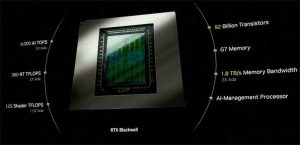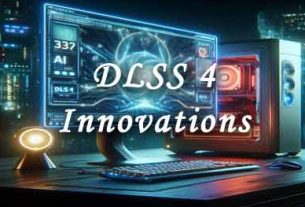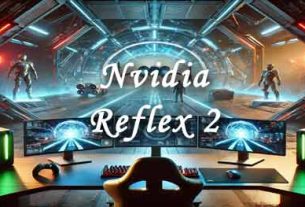The NVIDIA Blackwell architecture powers the revolutionary GeForce RTX 50 Series GPUs, enabling breakthroughs in AI-driven performance and rendering. While detailed technical specifications of the architecture remain scarce, its transformative capabilities are evident in the performance gains and innovations it brings to gaming, content creation, and AI applications.
Here are the key features and advancements that define the Blackwell architecture:
1. Up to 2x Performance Increase
The Blackwell architecture delivers up to twice the performance of the previous generation (GeForce RTX 4090), enabling smoother gameplay, higher frame rates, and unparalleled realism in graphics-intensive applications.
2. Fifth-Generation Tensor Cores
The integration of fifth-generation Tensor Cores significantly enhances AI processing power, enabling faster neural network computations. These cores are instrumental in:
- Real-time AI-powered rendering.
- Performance boosts in generative AI models.
- Enabling advanced DLSS 4 capabilities.
3. Fourth-Generation RT Cores
The Blackwell GPUs feature fourth-generation Ray Tracing (RT) Cores, which push real-time ray tracing to new heights by:
- Improving lighting, shadows, and reflections in real time.
- Enhancing computational efficiency for complex ray-traced scenes.
4. Support for DLSS 4
The Blackwell architecture powers the latest iteration of Deep Learning Super Sampling (DLSS 4), introducing:
- Multi Frame Generation: AI generates multiple frames per rendered frame for significant frame rate boosts.
- The first use of transformer-based models in real-time rendering, ensuring greater image stability and detail.
5. RTX Neural Shaders
For the first time, programmable shaders incorporate AI networks, allowing developers to:
- Create film-quality materials and lighting effects in real-time games.
- Push the boundaries of realism in virtual environments.
6. Support for FP4 Precision
The Blackwell architecture introduces FP4 (Floating Point 4-bit precision), which enhances:
- AI image generation performance, enabling faster execution of generative AI models.
- Reduced memory requirements, allowing for smaller yet powerful AI models to run locally.
AI-Centric Design for Next-Generation Applications
The Blackwell architecture embodies NVIDIA’s commitment to integrating AI into every facet of computing and graphics. By combining cutting-edge Tensor and RT Cores with AI-focused innovations like DLSS 4 and RTX Neural Shaders, it enables a wide range of applications, from lifelike digital characters to autonomous game behaviors and AI-driven creative workflows.
Expanding the Horizon
While the Blackwell architecture’s detailed specifications are not yet fully disclosed, its capabilities lay the foundation for NVIDIA’s vision of the future: AI-driven gaming, immersive content creation, and accelerated development of AI applications. For those seeking a more technical understanding, NVIDIA’s official documentation and detailed reviews from experts will provide deeper insights into the architectural advancements.
The Blackwell architecture is not just a leap forward; it’s the dawn of a new era in AI-powered computing and graphics.




